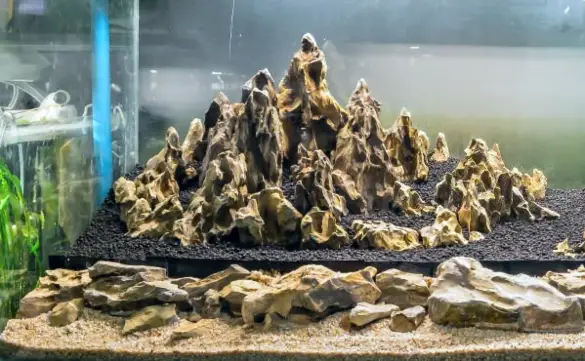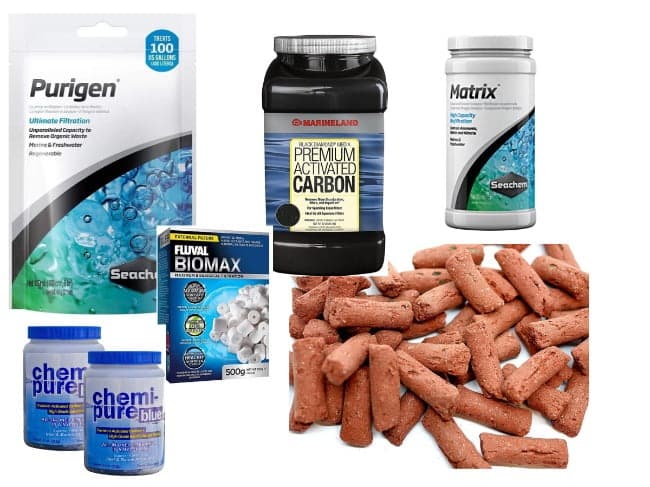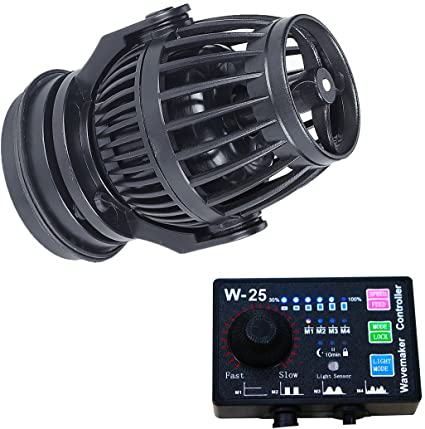What Is a Crashed Tank?
As beginners, it’s crucial to understand what a crashed tank is to ensure the well-being of your aquatic friends. A crashed tank can be a fish-keeping nightmare, but with the right knowledge, you can navigate and prevent such situations.
In our guide, we’ll explain what it is, the signs and symptoms, and some common causes. Also, we’ll equip you with the skills to recover and maintain a thriving aquarium. Let’s dive in and make your fish-keeping journey a smooth and enjoyable one!
What Is a Crashed Tank?
A crashed tank is an aquarium ecosystem that experiences a sudden breakdown, disrupting its natural balance. Imagine your tank as a bustling city, where every component works in harmony. However, a crash is like a power outage, causing chaos. It can stem from various factors that can lead to stress or mortality for your aquatic life.
Signs and Symptoms of a Crashed Tank
Signs and symptoms of a crashed tank can manifest in various ways, indicating an imbalance in the aquarium’s ecosystem. Here are some common indicators to watch for:
- Cloudy water: A sudden change in water clarity, often turning cloudy, might signal a bacterial bloom or excessive waste accumulation.
- Algae overgrowth: Rapid growth of algae, particularly brown or green blooms, suggests nutrient imbalances, usually due to poor water quality.
- Unusual fish behavior: Fish displaying stress behaviors like erratic swimming, gasping at the water surface, or hiding more than usual.
- Foul odor: A foul or strong smell emanating from the tank indicates an accumulation of waste, decaying matter, or bacterial imbalances.
- Dead or unhealthy fish: The sudden death of fish or a decline in their health despite regular care can be a critical sign of an unstable tank.
- Water test results: Unusual spikes or fluctuations in water parameters like ammonia, nitrites, or nitrates are crucial indicators of tank instability.
- Visible slime or film: A layer of slimy film on the water surface or equipment might denote bacterial overgrowth or poor filtration.
- Reduced oxygen levels: Gasping fish or plants struggling to thrive may indicate insufficient oxygen levels due to poor water circulation.
Common Causes of Tank Crashes
Understanding the triggers behind a tank crash is fundamental for keeping an aquarium healthy. Here are a few common causes:
- pH shifts: Rapid pH shifts often result from inadequate buffering or sudden additions of chemicals. These swings can stress fish, affecting their immune systems and causing health issues.
- Ammonia and nitrite spikes: Ammonia and nitrite spikes are detrimental. They’re toxic to fish, even at low levels. New tank setups or overstocked tanks might face these issues. Regular water testing helps catch these spikes early.
- Temperature fluctuations: Temperature fluctuations, especially sudden ones, can be harmful. Rapid temperature changes cause stress and weaken the immune response of fish, making them vulnerable to diseases.
- Overfeeding: Overfeeding and excess waste can quickly compromise water quality. Uneaten food and fish waste contribute to ammonia buildup, impacting water parameters.
- Changes in water chemistry: Sudden changes in water chemistry, such as using untreated tap water or introducing new decorations without proper preparation, can shock the aquarium system, leading to crashes.
Impact of a Tank Crash
A tank crash can take a toll on your aquatic community. It’s more than a temporary inconvenience — it affects the health of your fish and the entire aquarium ecosystem.

Fish are most vulnerable when their stress levels spike, weakening their immune systems and making them prone to diseases. Often, visible signs of distress, like sluggishness or gasping at the water’s surface, indicate the magnitude of the issue.
A crashed tank disrupts the balance of the whole ecosystem. Beneficial bacteria, essential for breaking down toxins, can dwindle or vanish entirely, leading to an ammonia and nitrite surge that further endangers fish health.
Moreover, when a tank crashes, it’s not just the visible damage — it’s also about the loss of the unseen, delicate balance within the tank. The ecosystem is sensitive, and a crash disrupts its harmony, risking the survival of the entire aquatic community.
Preventative Measures
Preventing a tank crash is often easier than dealing with its aftermath. Regular monitoring and maintenance are your best allies. Here are some preventative measures you can put into place:
- Test water parameters: Check water parameters consistently using test kits — ammonia, nitrites, and nitrates especially. These tests act as early warning systems, giving you a heads-up before any parameter goes haywire.
- Feeding schedule: Maintaining a feeding schedule that aligns with the needs of your fish is crucial. Overfeeding is a common pitfall leading to excess waste, elevating toxin levels in the water. Opt for a balanced diet and feed in moderation.
- Gradual changes: Remember, stability is key. Gradual changes in temperature or water chemistry prevent shocking your fish. When introducing new fish or performing water changes, aim for a slow, steady transition. Acclimatization minimizes stress on fish and maintains a stable tank environment.
Steps to Recover from a Tank Crash
In the unfortunate event of a crash, swift action is vital. You can follow these steps to help your aquarium recover from a crashed tank.

1. Immediate Actions
Recognizing the signs of a tank crash prompts immediate intervention. Conduct a partial water change, replacing about 25% of the tank water, to dilute toxins. Utilize water conditioners to neutralize harmful substances like ammonia and nitrites.
2. Corrective Measures for Water Parameters
Once the immediate issues are addressed, focus on rectifying water parameters. Test the water regularly and make gradual adjustments to parameters like pH, ammonia, nitrites, and nitrates using specialized solutions. This gradual approach helps in restoring a healthier aquatic environment without shocking the system.
3. Re-establishing Bacterial Colonies
Promote the re-establishment of beneficial bacterial colonies by utilizing beneficial bacteria supplements. These supplements expedite the growth of essential bacteria, aiding in the breakdown of harmful substances and fostering improved water quality.
4. Monitoring and Gradual Restoration
Vigilantly monitor the tank during recovery. Frequently check water parameters to ensure they stabilize within appropriate ranges. Gradually reintroduce routines such as feeding schedules and maintenance practices to avoid further stressing the fish.
Recovery from a tank crash involves immediate action, corrective measures, re-establishing bacterial colonies, and vigilant monitoring. With patience and consistent efforts, your tank can regain its balance and return to a thriving state.
Bouncing Back from a Crashed Tank — Your Path to Recovery
A crashed tank is a rude wake-up call to the delicate balance within our aquatic ecosystems. Proactive tank management, regular checks, and a keen eye on water parameters are your best allies in averting disaster.
Remember, even seasoned aquarists face tank crashes. So, to all beginners — fear not! Embrace each experience as a learning curve. Dive into responsible tank maintenance, explore new methods, and remain diligent.
Explore Aquabuildr, the app designed to guide your tank journey. Its intelligent algorithm helps build and maintain thriving aquariums, empowering beginners on their fish-keeping odyssey.
Download the app from the Google Play Store or Apple App Store for FREE!
-
What Is a Crashed Tank?
Understand what a crashed tank is, its signs, causes, and preventative measures. Learn effective treatments to manage and prevent future issues.







